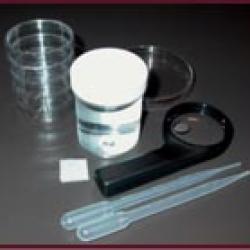Source Institutions
Source Institutions
Add to list Go to activity
Activity link broken? See if it's at the internet archive

In this experiment with planaria (a type of flatworm), learners will investigate the capability of different body sections to regenerate. When a planaria’s head is cut off, the remaining tail section will regenerate a head. The regenerative capacity of different body sections may be an indicator of the location of neoblasts (stem cells). Learners will compare how long it takes for worms cut in different places to regenerate a head. Learners will collect data over the course of 7-14 days.
- 5 to 10 minutes
- 1 to 4 weeks
- $5 - $10 per student
- Ages 11 - 18
- Activity, Experiment/Lab Activity, Lesson/Lesson Plan
- English
Quick Guide
Materials List (per student)
- 9 planaria
- 3 small plastic Petri dishes
- 1 large plastic Petri dish
- 1 plastic pipette
- 1 magnifying glass
- 1 plastic coverslip
- spring water
- paper towels
- thermometer
- permanent marker
- planaria data sheet
Subjects
-
Life Sciences
-
Cells
- Cell Structure and Function
- Cell Division
-
Diversity of Life
- Animals
-
Cells
-
Mathematics
-
Data Analysis and Probability
- Data Analysis
- Data Collection
- Data Representation
-
Measurement
- Rate
-
Data Analysis and Probability
-
The Nature of Science
-
The Scientific Process
- Conducting Investigations
- Gathering Data
- Formulating Explanations
- Communicating Results
-
The Scientific Process
Informal Categories
- Animals
Audience
To use this activity, learners need to:
- see
- see color
- touch
Learning styles supported:
- Involves hands-on or lab activities
Other
Components that are part of this resource:
- Potent Biology: Stem Cells, Cloning, and Regeneration (lecture series)
- Planarian Regeneration and Stem Cells
- Activity Worksheet
This resource is part of:
Access Rights:
- Free access
By:
Rights:
- All rights reserved, Howard Hughes Medical Institute, 2007
